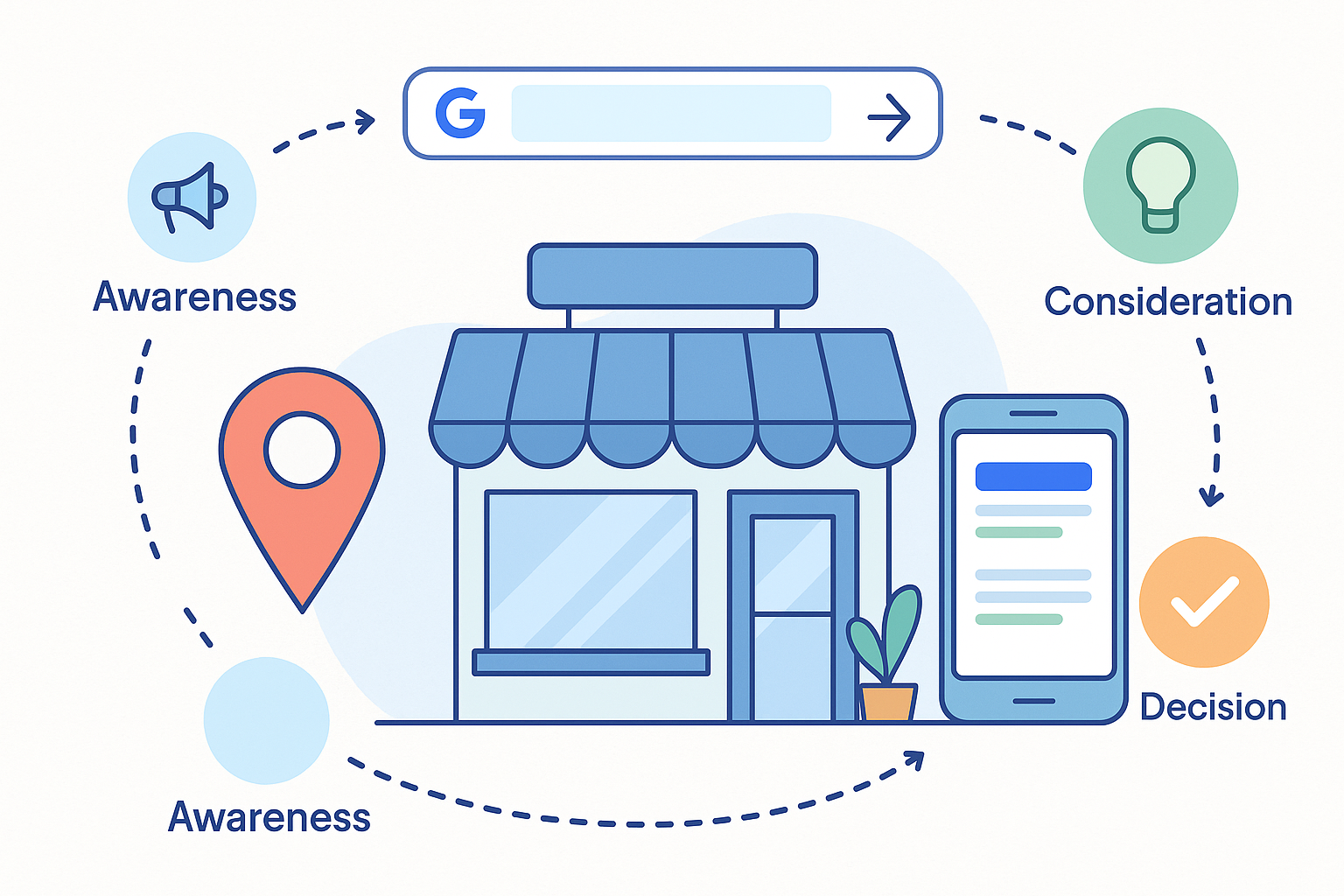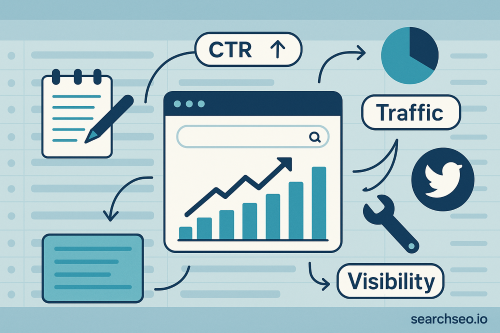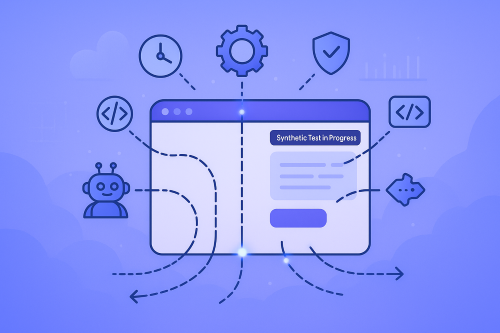Want more conversions from your local SEO? Start with your customer’s mindset, not just your keywords.
Customer journey mapping helps you understand how real people move from “I need something” to “I trust you enough to buy.” And when you align your local SEO strategy with those steps, you become the obvious choice in your market.
Here’s how to make that happen.

Why customer journey mapping matters in local SEO
The old playbook relied on stuffing keywords and ranking pages.
But search engines and users have evolved. Today, intent matters more than position. That’s where customer journey mapping comes in. It helps you speak to your audience at every step of their decision-making process.
For local businesses, this is even more important. You’re not just competing on price or product. You’re also competing for trust, convenience, and relevance in your area.
Take a bakery, for example. A customer might start with a Google search like “birthday cake near me,” browse local listings, read reviews, visit your website, and finally place an order. That’s the journey. Mapping it helps you meet them at every step.
Customer journey mapping is a visual or written representation of how a potential customer interacts with your business. It follows them from awareness to loyalty.
The typical journey includes five stages:
- Awareness: “I have a problem.”
- Consideration: “I’m researching solutions.”
- Decision: “I’ve narrowed it down.”
- Purchase: “Let’s do this.”
- Loyalty: “I trust you. What’s next?”
This is not a simple sales funnel. The customer journey often jumps between stages and crosses multiple touchpoints. Mapping it forces you to think like your customer instead of focusing only on marketing tactics.
How customer journey mapping connects to local SEO
Local SEO is more than optimizing for “near me” searches. It’s about understanding what local people want, what they care about, and how they search.
When you map the journey and add SEO intent to each stage, you can:
- Match content to real questions and needs
- Improve click-through rates (CTR)
- Build trust and visibility in your area
Common local touchpoints:
- Google Business Profile
- Local map results
- Review sites
- Social media
- Mobile search
- Voice search
Each of these is a moment in your customer’s journey. Make sure you're showing up in the right place at the right time.
How to create a local customer journey map
Step 1: Define your local buyer personas
Start by understanding who your customers are. Use tools like Google Analytics, surveys, or chat logs. Look for:
- Pain points
- Search behavior
- Location-specific needs
Step 2: Identify key local touchpoints
Where do your customers go when they need help or want to compare options?
- Online: Google, Yelp, Instagram, local Facebook groups
- Offline: Events, window displays, community boards
Step 3: Match content to each journey stage
Awareness: Blog posts targeting local search terms like “best yoga studios in Austin”
Consideration: Review pages, how-to guides, service comparisons
Decision: Optimized landing pages, trust badges, clear calls to action
Loyalty: Follow-up emails, thank-you messages, referral offers
Step 4: Connect SEO strategy to your journey map
- Use keywords that match intent, not just traffic volume
- Add internal links to guide users from one stage to the next
- Use local schema markup to help search engines understand your content
Tools and templates to help you get started
Don’t start from scratch. These tools will help you move faster:
- Miro or Lucidchart for visual mapping
- HubSpot journey templates
- SearchSEO.io for sending quality traffic based on mapped stages
- BrightLocal for tracking rankings and local visibility
Bonus tip: Use AI tools like ChatGPT to simulate how a local customer might search and what content they need at each step.
Common mistakes to avoid
- Using a national SEO strategy for a local business
Local search is different. It’s more about trust and timing than national rankings. - Ignoring mobile and voice search
More than half of all local searches happen on mobile. Your site should be fast, responsive, and easy to navigate. - Stopping at the sale
Don’t forget about loyalty. Post-sale engagement can bring in reviews, referrals, and repeat business.
Turn insight into local impact
Your ideal customer isn’t just typing keywords. They’re making decisions, comparing options, and searching for someone they trust.
When you use customer journey mapping with local SEO, you create a strategy that works with how people buy. Not against it.
Here’s what to do next:
- Map your customer journey
- Audit your local SEO at every stage
- Use SearchSEO.io to drive quality traffic that matches each intent
Boosting local SEO with GMB CTR manipulation
Your Google Business Profile (formerly GMB) is more than just a digital listing. For many local customers, it is their first impression of your business.
That is why click-through rate (CTR) manipulation on GMB can make a meaningful difference in your local SEO strategy.
CTR manipulation increases the number of real users who search for your target keywords and click on your GMB listing in the local map pack or search results. This user behavior sends a strong signal to Google that your business is relevant for those terms.
Over time, a higher CTR can help you:
- Improve rankings in the local 3-pack
- Show up more often in “near me” searches
- Increase your overall visibility and trust locally
For example, say you run a dental clinic in Dallas. If users search for “emergency dentist Dallas” or “cosmetic dentist near me” and consistently click your listing, Google starts to view your business as the most relevant option in that area.
The key is keeping this behavior natural. Tools like SearchSEO.io help simulate real searches and user behavior using residential IP addresses and real browsers. This mimics authentic traffic rather than triggering spam filters.
To get the most from CTR manipulation, combine it with other local SEO best practices. That includes having accurate contact information, positive reviews, optimized photos, and updated business hours. These efforts work together to increase your chances of standing out and staying there.


.svg)

.svg)
%201.png)








.svg)